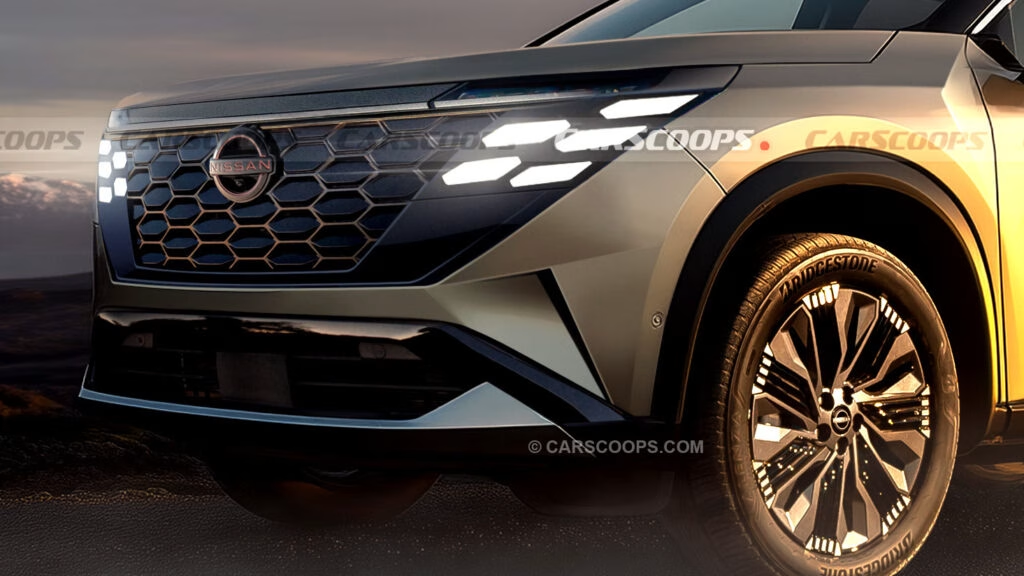What’s Changing With the 2027 Nissan Rogue and Why Does It Matter?
Nissan’s been in the hot seat lately—factory closures, layoffs, and financial woes have dominated the headlines. But if you’re a fan of practical, family-friendly SUVs, there’s a bright spot: the next-generation Nissan Rogue (known as the X-Trail elsewhere) is getting a bold refresh. This isn’t just a facelift; it’s a strategic move that could make or break Nissan’s future in the ultra-competitive compact SUV market.
How Is the New Rogue’s Design Different From Previous Models?
Let’s cut to the chase: the upcoming Rogue is going for a tougher, more adventurous look. Think blacked-out lighting, a bolder grille with five hexagonal DRL elements per side, and a squared-off hood that gives it a bit of attitude. The fenders are sculpted for a muscular vibe, and the rear D-pillar borrows cues from the latest Patrol SUV, tying the design together with sharp, wraparound LED taillights.
These aren’t just cosmetic tweaks. Nissan is clearly aiming to stand out against rivals like the Toyota RAV4, Mazda CX-5, and Hyundai Tucson, all of which have upped their style game in recent years. The new Rogue’s edgier appearance is a direct response to changing tastes—buyers want SUVs that look as rugged as they feel behind the wheel.
What’s New Inside the Cabin?
Step inside, and you’ll notice the Rogue is borrowing some of the best ideas from Nissan’s Ariya EV and the latest Murano. Expect a clean, horizontal dashboard with dual widescreen displays—one for your gauges, one for infotainment. Physical buttons are mostly out, replaced by a more streamlined, tech-forward interface. Materials get an upgrade, too, with a focus on soft-touch surfaces and a more premium feel throughout.
There’s also talk of slightly increased interior space, though the two-row, five-seat layout remains standard for North America. For those who need more seats, the X-Trail variant overseas is expected to keep an optional third row. And yes, Nissan’s latest ProPILOT driver-assist tech will be on board, making long commutes and highway drives less of a chore.
Will the Powertrain Options Really Make a Difference?
Here’s where things get interesting. The next Rogue won’t just stick with its tried-and-true gas engine. Nissan is introducing its innovative e-Power hybrid system to the U.S. for the first time. Unlike traditional hybrids, e-Power uses a turbocharged 1.5-liter engine as a generator to charge the battery, while the electric motor alone drives the wheels. The result? You get the smooth, quiet feel of an EV at low speeds, with the range and convenience of a gas engine when you need it.
There’s more: a plug-in hybrid (PHEV) version is also on the way, rumored to share tech with the Mitsubishi Outlander PHEV. This could be a game-changer for buyers who want electric driving for their daily commute but aren’t ready to go fully electric. According to a recent report from the International Energy Agency, hybrid and plug-in hybrid sales are expected to grow by over 20% globally in 2025, so Nissan’s timing couldn’t be better.
How Does the Rogue Stack Up Against Its Rivals?
Competition in the compact SUV segment is fierce. The Toyota RAV4, Honda CR-V, and Mazda CX-5 are perennial favorites, and newcomers like the Hyundai Tucson and Volkswagen Tiguan are pushing the envelope with tech and design. The new Rogue’s hybrid and PHEV options are a direct answer to Toyota’s electrified RAV4 lineup and Honda’s CR-V Hybrid.
But Nissan isn’t just playing catch-up. By offering a unique hybrid system and a plug-in option, they’re carving out a niche for drivers who want the benefits of electrification without the range anxiety of full EVs. Add in the refreshed styling and upgraded interior, and the Rogue could be poised for a comeback.
When Can You Expect to See the New Rogue?
Industry insiders suggest the new Rogue will make its official debut in mid-2026, with production for North America ramping up soon after. That gives Nissan just enough time to iron out any wrinkles and ensure the Rogue is ready to take on its rivals head-to-head.
What’s the Real Impact for Buyers and Nissan’s Future?
For Nissan, the stakes couldn’t be higher. The Rogue/X-Trail is their global breadwinner, especially in the U.S. market. A successful redesign could help reverse the automaker’s recent financial troubles and restore some much-needed confidence among dealers and buyers alike.
For you, the shopper, this means more choices—especially if you’re looking for a stylish, efficient SUV with the latest tech. The new Rogue’s hybrid and plug-in options offer real-world benefits: lower running costs, fewer trips to the pump, and a driving experience that’s smoother and quieter than ever.
The big takeaway? Reinventing a best-seller like the Rogue isn’t about perfection—it’s about smarter adjustments. Start with one change this week, and you’ll likely spot the difference by month’s end. Whether that’s a bolder look, a more refined cabin, or a hybrid powertrain, Nissan’s betting these tweaks will be enough to keep the Rogue at the top of your shopping list.

